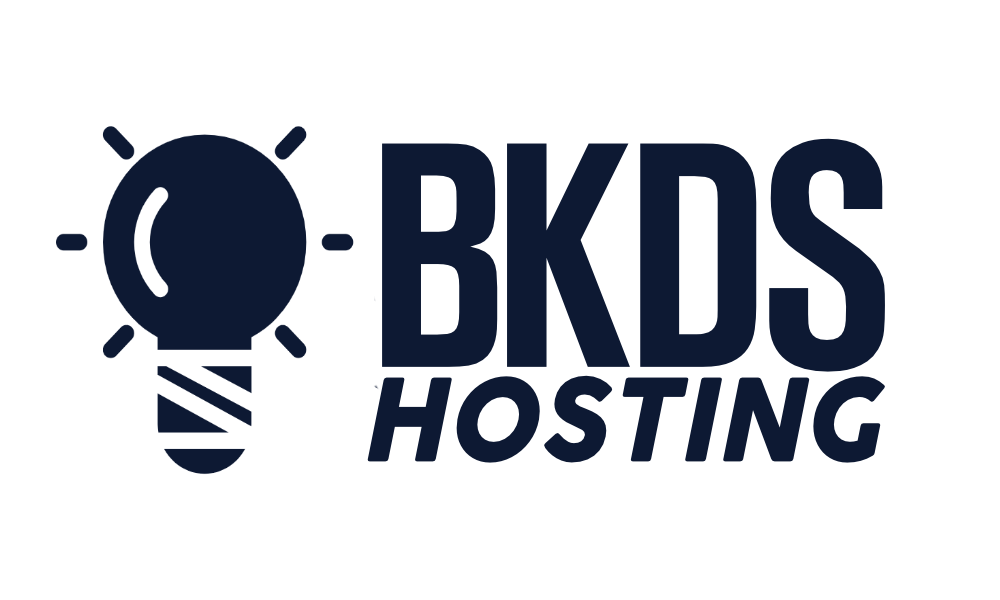In the digital age, the reliability of a business website can greatly influence its success and overall performance. It is not just about having an aesthetically pleasing design or engaging content, the technical aspect, particularly uptime, plays a critical role. Uptime, or the measure of time a website is fully operational and accessible to users, is often overlooked but can have profound implications on customer trust, search engine rankings, and ultimately, revenue. This discussion will explore nine key tips to optimize uptime and its consequential impact on business website performance. However, one may ask, how significant is the influence of uptime and what practices can businesses employ to ensure maximum operational continuity? Let us delve into these critical questions.
Understanding Uptime's Importance

In examining the crucial role of uptime in business website performance, it becomes evident that its importance lies not only in maintaining customer trust and loyalty, but also in optimizing time efficiency, preventing revenue loss, and enhancing SEO ranking. A consistent uptime directly influences customer trust and loyalty, fortifying business relationships, and mitigating potential damage to brand image. This effect of uptime's impact on business cannot be overstated.
The absence of service outages, ensured by high uptime, optimizes time efficiency, thereby preventing wasted man-hours, productivity loss, and potential financial drain. It is a critical element in maintaining the seamless operation of digital platforms, further underlining uptime's significant role in website performance.
Revenue loss prevention, another key benefit of maintaining high uptime, assures continuous e-commerce transactions and sustained SEO performance. Consistent uptime not only fosters sales but also boosts the website's SEO scores, improving website visibility and organic traffic.
Moreover, uptime performance is a decisive factor influencing long-term SEO ranking. For businesses aspiring to establish a sustained online presence, meticulous attention to uptime becomes essential. Thus, understanding and maintaining high uptime should be a top priority for businesses seeking to optimize their website performance.
Consistency in User Experience
The impact of uptime on a business website's performance is heavily influenced by the consistency in user experience, underlining the importance of a refined user interface and a streamlined navigation process. A well-structured, intuitive interface contributes to a seamless user journey, enhancing user satisfaction and engagement. By optimizing these elements, businesses can ensure a high degree of reliability and coherence, reinforcing their brand identity and trust amongst users.
Enhancing User Interface
Achieving consistency in user experience, a key aspect of enhancing the user interface, requires meticulous attention to detail and a thorough understanding of user behavior. This goes beyond aesthetic appeal and into how the website loads, how responsive it is, and how intuitively users can navigate. Each of these factors significantly impact user experience.
The technical aspects, including the speed at which a website loads, must be optimized to ensure a seamless user experience. Additionally, the design elements should be consistent across all pages to create a cohesive feel. This consistency, combined with user-centric design, can significantly enhance the user interface. By focusing on these areas, businesses can provide a superior user experience, leading to increased customer satisfaction and ultimately, business success.
Streamlining Navigation Process
Optimizing the navigation process, particularly through embracing consistency in user experience, forms a critical component of website performance and user satisfaction. An intuitive, user-friendly navigation layout allows users to find information quickly and easily, enhancing the overall performance of a website.
Effective strategies for streamlining the navigation process include:
- Implementing a clear menu structure that guides users through the site.
- Ensuring consistent navigation elements across all pages to maintain a seamless user experience.
- Utilizing breadcrumbs for easy backtracking within the website.
- Including a search functionality that enables users to locate specific content or pages efficiently.
Uptime and SEO Rankings

In the realm of SEO rankings, a consistently high uptime not only contributes to a better score but also enhances website visibility and organic traffic, whereas frequent offline periods may result in Google's penalization. The search engine views uptime as an indicator of website reliability, thus incorporating it into its ranking algorithm.
| Factors | High Uptime | Frequent Downtime |
|---|---|---|
| SEO Score | Improves | Negatively Impacts |
| Website Visibility | Enhances | Reduces |
| Organic Traffic | Increases | Decreases |
| Google's View | Reliable | Unreliable |
However, it's crucial to point out that temporary downtime may not significantly affect your website ranking, but uptime performance over the long term certainly does. Therefore, maintaining a high uptime should be viewed as a long-term investment for improving SEO rankings.
Impact on Customer Trust
The relationship between uptime and customer trust is multifaceted, with significant implications for brand reliability and seamless transactions. Consistent uptime can greatly enhance a brand's perceived reliability, leading to increased customer loyalty and a more positive brand image. At the same time, ensuring seamless transactions through uninterrupted website functionality is crucial in maintaining customer trust and satisfaction, ultimately influencing a business's online presence and success.
Building Brand Reliability
Maintaining a consistent uptime for a business's website is a critical factor in building brand reliability and enhancing customer trust. The uptime's impact on business website performance is profound, and here's why:
- Consistent Uptime: A stable website signals to customers that your brand is reliable, dependable, and invested in their experience.
- Proactive Issue Resolution: Rapid website issue resolution showcases your commitment to customer satisfaction, further reinforcing brand reliability.
- Positive User Experience: A reliable website performance results in a seamless customer experience, enhancing trust in your brand.
- Reputation Management: Consistent uptime helps safeguard your brand's reputation, portraying it as a credible and trustworthy entity in the digital world.
In essence, uptime directly influences brand reliability, impacting customer trust, and ultimately your business's overall performance.
Ensuring Seamless Transactions
While uptime significantly contributes to building brand reliability, it also plays a pivotal role in ensuring seamless transactions, thereby fostering an enhanced level of customer trust. The use of reliable website monitoring tools is crucial to guarantee this process. These tools are programmed to alert the website administrators about any potential issues, helping to minimize downtime and ensure continuous, uninterrupted service. This continuous monitoring not only ensures seamless transactions but also bolsters customer trust in the online operations of the business. Customers' trust is further fortified when their transactions proceed without any disruptions or obstacles, leading to increased confidence in the brand. Therefore, seamless transactions induced by optimal uptime directly influence customer satisfaction, loyalty, and long-term relationships.
Uptime's Trust Influence
Undeniably, consistent uptime is instrumental in fostering a profound sense of customer trust in a website's reliability and availability. An important website with high uptime signals reliability and commitment, which is crucial in running a website that customers trust.
- A high uptime score invariably strengthens the perceived reliability of a business, fostering customer trust.
- Significant downtime can cause customers to question the reliability of the website, damaging their trust and the brand image.
- Uninterrupted uptime ensures a seamless user experience, contributing to customer satisfaction and brand loyalty.
- High uptime is linked with better SEO score, enhancing the visibility of the website and organically driving more traffic, indirectly enhancing customer trust.
In essence, uptime is a critical factor influencing customer trust in a business's online presence.
Revenue Consequences of Downtime
Examining the financial implications of downtime reveals a significant impact on revenue, as it not only undermines customer loyalty and tarnishes the brand image, but also directly impedes revenue generation by making products and services unavailable. Downtime, therefore, poses a clear and present risk to a firm's bottom line.
Firstly, frequent service outages waste customer time, leading to productivity loss and potentially inducing them to seek alternatives. This can translate into substantial financial losses. Moreover, Google penalizes sites with recurrent downtime, adversely affecting SEO rankings and organic traffic, thus, further impairing income streams.
To quantify these revenue consequences of downtime, one can multiply the duration of downtime with the revenue rate. This analytical approach provides a stark illustration of uptime's impact on business website performance. It is a clear signal to businesses to prioritize their website's reliability and uptime.
In the fast-paced digital economy, innovative solutions for minimizing downtime should be at the forefront of business strategy. Implementing robust and responsive site monitoring tools, investing in high-performing hosting services, and adopting a proactive approach to IT infrastructure management are all critical steps in mitigating the financial fallout from downtime.
Uptime as a Competitive Advantage

In the fiercely competitive digital landscape, achieving high uptime can serve as a significant competitive advantage, fostering customer trust and loyalty, optimizing resource allocation, and ultimately bolstering business growth. For website owners, understanding uptime's impact on business website performance is critical.
A high level of uptime:
- Enhances the brand image by strengthening customer trust and loyalty, as consistent availability demonstrates dedication to user experience.
- Boosts productivity by saving time and resources. When a website is always accessible, it allows for uninterrupted workflow and improved customer satisfaction.
- Prevents potential revenue loss by ensuring continuous sales operations. Every moment of downtime equates to missed opportunities and lost income.
- Improves SEO scores, thus enhancing website visibility and organic traffic. Search engines favor sites with high uptime, making them easier to find by potential customers.
In essence, uptime is not just about keeping a website online; it is a strategic advantage in the digital arena. As such, website owners need to prioritize uptime to enhance performance, drive growth, and stay competitive in today's innovative and fast-paced business environment.
Role of Hosting in Uptime
Significantly, the hosting service chosen by a business plays a pivotal role in website uptime, primarily through the provision of server resources and assurance of infrastructure reliability. This choice directly influences server response times and the overall availability of the website to visitors.
Hosting services not only allocate server resources but also ensure that these resources are scalable. This scalability is crucial during traffic spikes, ensuring that server response remains unhindered, thus maintaining website speed and consistent uptime.
Furthermore, the right hosting provider offers robust uptime guarantees and proactive monitoring. These features contribute to minimizing downtime, a key factor in ensuring optimal website performance. Proactive monitoring, in particular, allows for the early detection and rectification of potential issues that could negatively impact uptime.
In essence, the choice of hosting service is instrumental in upholding website uptime. A reliable and scalable hosting service will provide a strong foundation for maintaining server response times and website speed. This, in turn, reinforces overall business performance by ensuring the website's consistent availability and responsiveness to visitors.
Monitoring for Maximum Uptime

To optimize business website performance, it is essential to implement a strategy for comprehensive website monitoring, ensuring maximum uptime and uninterrupted site accessibility. A website's uptime directly affects revenue, customer satisfaction, and brand reputation.
Monitoring for maximum uptime involves several key steps:
- Regularly checking your website's uptime. This involves constant tracking to ensure that your site is always accessible to users, thereby avoiding the loss of potential customers due to site inaccessibility.
- Utilizing the monitoring tools and features offered by your web hosting company. These tools offer comprehensive tracking abilities that can help identify any potential issues that could lead to downtime.
- Implementing ping tests to check the uptime and response time of your website. These tests can provide crucial data on how quickly your site loads, which is a major factor in user satisfaction.
- Monitoring multiple pages on your website, not just the homepage. This ensures that the entire website is functioning properly and that users can access all areas of the site without issues.
Implementing Uptime Best Practices
Having understood the importance of monitoring for maximum uptime, it becomes equally critical to delve into the process of implementing uptime best practices to further enhance your website's performance and reliability. These strategies can help to ensure consistent service delivery, bolster user satisfaction, and mitigate lost revenue due to downtime.
To bring these practices to life, consider the following table:
| Best Practice | Description | Impact |
|---|---|---|
| Reliable Monitoring Tools | Consistent tracking of uptime and performance | Reduces downtime and improves reliability |
| Data Analysis | Regular reviews of monitoring data to identify areas for improvement | Enhances performance, identifies issues early |
| Incident Response Plan | Protocols for swift issue resolution | Minimizes downtime, preserves user experience |
The uptime's impact on your website can be significantly lessened by incorporating these best practices. Invest in reliable monitoring tools that provide real-time data, analyze this data regularly to identify potential problems, and establish a robust incident response plan to ensure quick recovery from any issues. By doing so, you will not only improve your website's performance but also build a stronger relationship with your users, who will appreciate the consistent, high-quality service your site delivers.
Conclusion
In conclusion, uptime significantly influences business website performance, affecting user experience, SEO rankings, customer trust, and potential revenue. Hosting choices and rigorous monitoring practices contribute to optimal uptime. Implementing best practices for uptime can provide a competitive edge, underscoring the imperative for businesses to prioritize consistent website availability and accessibility. Therefore, understanding and optimizing uptime is a critical aspect of effective online business management.

